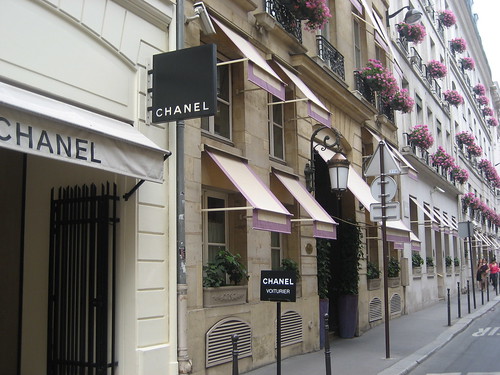Misia
Misia, the new bird in Chanel's flock of exclusive scents has pleasantly surprised me with its soft, down-like softness, warmth and retro sweetness. It immediately brings to mind candied violet petals, with its overdose of alpha ionones, which dominate the opening, giving it the characteristic cedar wood effect. This balances the sweetness of the composition, addinga woody, dry yet powdery and soft air to it. This is quickly taken over by juicy, fruity notes of a plush, dark-red rose. Raspberry and plum notes rule supreme with every stroke of this bold bluish-red lipstick. The iconic Lipstick Rose comes to mind, as well as the scent that pervades most of the current Guerlain cosmetics. But more on points of references later. While there is more than a gourmand hint to Misia, it does not in the least smell too obviously dessert-like, nor trashy. It does, however, give it a most addictive character. As the fruit and rose soften and become rounder, the sweet supporting base note begin to emerge, and they are the perfume-world equivalent of caramel: tonka bean, with its slightly bitter, powdery qualities of almond rocca; and benzoin, which is like liquified brown sugar, with a depth to its sweetness that stops it from being cloying. There is something about the dry down that is not how I'd expect this to end. It's thankfully not too powdery, nor too musky; and sweetness is played just right, balanced with an earthy nuttiness. If there is any leather in there I can't smell it, unfortunately.
If I didn't know the perfumer behind Misia is Olivier Pole (Jaqcues Polge's son and successor as Chanel's house perfumer) I would have guessed it's Sophia Grojsman (Lancome's Tresor and YSL's Paris smell like close relatives). But there is more violet than rose in Misia, which if I were to blind test this would make me think of it is a Guerlain. Not so much the old fashioned violet-laden Apres l'Ondee or l'Heure Bleue, but rather, Meteorites (a scent that was phased out and instead was used to scent their makeup line of the same name); or perhaps a more agreeable version of their recent violet-dominated La Petite Robe Noire (which although I like its idea, I find it to be more than a tad too brash to my taste). But again I will contradict that notion because Misia's character is a more nuanced and less invasive.
With all these references to existing non-Chanel fragrances, you can probably already guess that there is nothing particularly groundbreaking about it. However, in the context of it being part of the Chanel family, and comparing it to the rest of the collection, it is admittedly quite refreshing to be offered the choice of a perfume that it is not nearly as austere, angular or aloof as the temperament of this house tends to lean on. Misia seems even more "out of place" than Coromandel was at its time - a patchouli fragrance in a collection of iris and aldehydic florals. But even Coromandel has a coolness to it, a bit of a sharp edge that surrounds a very clean, albeit sweetened patchouli. Misha wants to crawl right next to my Bois des Iles bottle and cuddle, while still wearing its silk stockings and with a fully powdered and made-up face.
Top notes: Ionones alpha (Violet notes), Raspberry, Plum
Heart notes: Rose, Orris, Damascones
Base notes: Tonka bean, Benzoin







